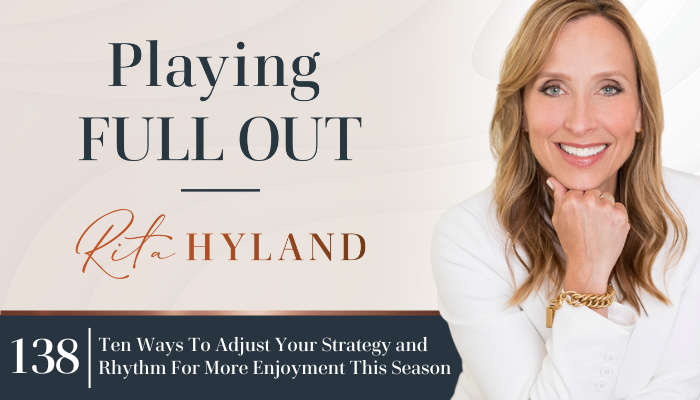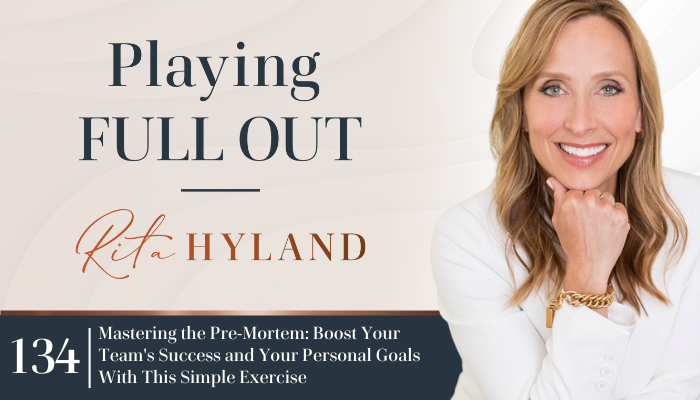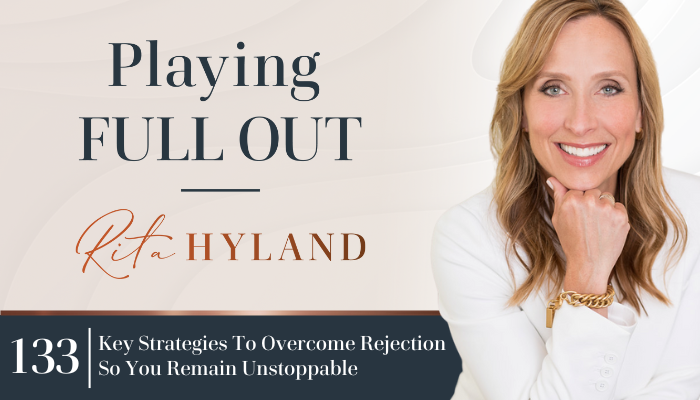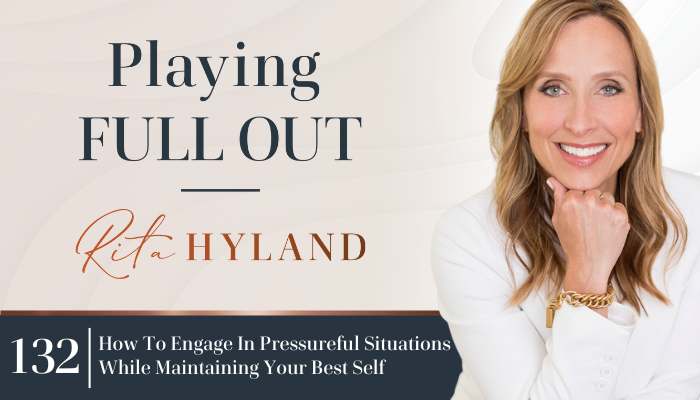Four Simple Steps to Reset Your Goals Based on Your Ultimate Future

Listen to the full podcast episode to learn about the science-backed practice that has not only changed my life but also the lives of countless people over the last two decades. This is something you can’t ignore if you want to achieve that great goal you identified for this year and write your new future.
Hey there, friends! Can you believe it? Another year has passed, and it’s time to prepare for a fresh start. Congratulations on all you’ve accomplished in 2024! If you’re like most, you’re now ready to hit the reset button and dive into the next year with clarity and inspiration.
In this episode, I’m sharing a simple and intentional approach to resetting your goals that are emotionally connected to your picture of the ultimate future. This method is specifically designed to eliminate the stress and resistance often attached to goal setting while also ensuring you identify goals that inspire and motivate you. Listen here for your simple step-by-step guide to create a future and plan that excites and inspires you.
The Problem with Traditional Goal Setting
Goal-setting often comes with its fair share of stress and resistance. Perhaps you’ve been putting off creating your personal and professional goals. Or maybe you’ve identified yours and wonder if they are good in theory but not so irresistible that you’ll follow through when you start to struggle.
How do we avoid this common pitfall from traditional goal setting? The key is not use your goals as the place where you declare your destination. What do I mean? Any good resetting of goals begins by defining your ultimate future. The vision and destination of who you want to be and where you want to go. Your ultimate future acts as your street address and your goals the directions guiding you toward it. When you take this approach, you’ll find that your goals become the roadmap that is motivating, inspiring, and aligned with your true desires.
But before we dive into the tactical ways to come up with your ultimate future vision and your goals to get there, let’s start by fueling your journey with a few mindset shifts.
Mindset Shifts Before Resetting Goal Setting
Redesign Your Life at Any Time
Your life and goals are always up for redesign.
Lighten Up
Don’t be so darn hard on yourself. Goals don’t have to be stressful or a source of self-criticism. Make an agreement to stop being hard on yourself. For many of us that is a work in practice. Instead, embrace creativity and flow, let go of the pressure to be perfect, and replace the inner critic with a reassuring voice that motivates you.
Enjoy This Version of You
You’re only going to get this version of you once, so why not enjoy. You’re not the same person you were last year. You won’t be the same version at the end. Celebrate this phase of your life and honor the unique opportunities it brings. Think fresh. Think new. You’re never going to get this version of you again. So, enjoy it.
Attract, Don’t Chase
Stop chasing goals with desperation. Be an attractor of your ultimate future vision in the new year. Attract them by operating from a place of gratitude, trust, and belief that your desire already exists and you are simply going to claim it.
Identify Your Ultimate Future
Now that you have adjusted your mindset, it is time to create your ultimate future from the 50,000-foot view. Paint a picture of yourself that answers questions like: What kind of person are you in the future? What experiences do you want to have? How do you feel on a daily basis?
Think about your family, your health, your career, and your personal growth. Consider the trips you want to take, the impact you want to have, and the people you want to be surrounded by. See your environment, your relationships, and the energy you bring into each day. This ultimate future should excite you and feel irresistible. I encourage you to have fun designing it, knowing that you can always change it. You can always redesign it.
The Four Steps to Goal-Setting
With your ultimate future in mind, you can now set goals that act as a directional may by following these steps:
Step 1: Know How You Want To Feel
Identify the primary three emotions you want to feel regularly throughout your journey. This could be calm, freedom, joy, peace, or any other state. It’s more important how you feel as you travel than when you do at your destination. Research has shown that joy is in the anticipation – not the destination.
Step 2: List Annual Goals
List 8 to 12 annual goals that contribute to your ultimate future. Ensure these goals align with the emotions and experiences you want to cultivate. Detail them enough to know when you’ve achieved them.
Step 3: Select Quarterly Goals
To make your annual goals more manageable, break them down into quarterly goals. Choose 1 to 3 goals to focus on each quarter. Remember, you can’t work on all your goals at once. Focus on the most important and achievable goals in the upcoming quarter, and create specific actions for each goal.
Step 4: Define Next Actions
For each of your quarterly goals, identify 5 to 7 actionable steps you can start working on immediately. These specific tasks and actions will move you closer to your desired outcome.
Cultivating a Positive Relationship with Your Goals
A key to maintaining motivation is to remember your goals are neutral. Don’t make them personal. Don’t make them mean something they don’t. They are not a measure of your worth but tools that guide you toward your ultimate future. Regularly refreshing and realigning with your goals helps sustain this positive dynamic.
Goal setting doesn’t have to be hard. It doesn’t have to be painful.
It can be a fun, creative process that points you towards your desired future and enhances your journey there. It’s our mindset around it and how we approach it that makes it so.
As you prepare for the new year, take the time to reflect on and design your ultimate future thoughtfully and with intention. You will know you’ve hit if, if it feels irresistible.
My team has prepared a downloadable worksheet to help you complete the steps above. Use it to follow along and start crafting your empowered, passion-driven goals today.
In this episode, you’ll learn how to:
- Create goals that are in flow with this current version of you
- Incorporate the necessary mindset shifts to eliminate the resistance, stress, and critical nature associated with traditional goal setting.
- View your goals as your shotgun rider, simply helping you navigate as you drive
Resources and related episodes:
- Grab the Four Simple Steps to Reset Your Goals Based On Your Ultimate Future
- Tune in to the previous episode, The Year End Review
- Book a connection call with Rita
- If you’d like to be notified of when new podcast episodes are released, you can do so here: Playing Full Out
- Learn more about the Inside Out Method
- Connect with Rita on LinkedIn
Subscribe on Apple Podcasts for more tips, tools, and inspiration to lead the optimal vision of your life, love, and leadership. Remember, a half version of you is not enough. The world needs the fullest version of you at play.
___
About Rita Hyland
With over 20 years of experience as an executive and leadership coach, Rita helps leaders — emerging and established — excel in corporate and entrepreneurial environments.
Rita believes if leaders were more clear about how transformation really works and more intentional about creating what they want, their impact, success, and influence in the world would be unstoppable.
Through her coaching programs, private coaching, and masterminds, Rita shows leaders how to win consistently and create the impact and legacy they desire.
Central to Rita’s work is the understanding that you will never outperform your current programming, no matter how strong your willpower.
When you learn to use Rita’s proprietary Inside Out Method, a technology that uses the best of neuroscience and transformational psychology to hit the brain’s buttons for change, YOU become both the solution and the strategy.
Her mission is to end talented, hard-working, and self-aware leaders spending another day stuck in self-doubt or confusion and not contributing their brilliant work and talent the world so desperately needs.



















